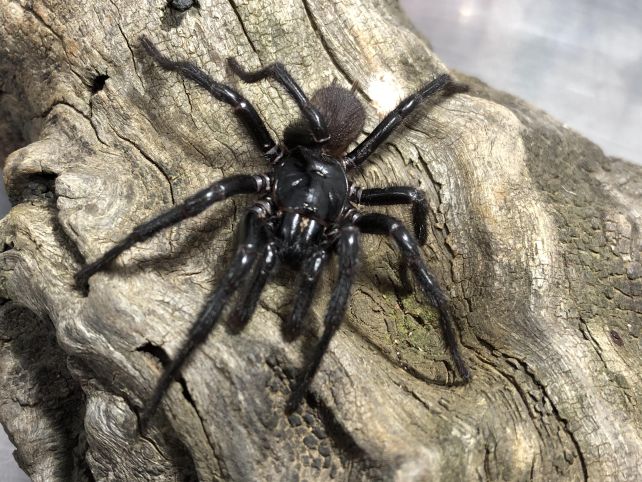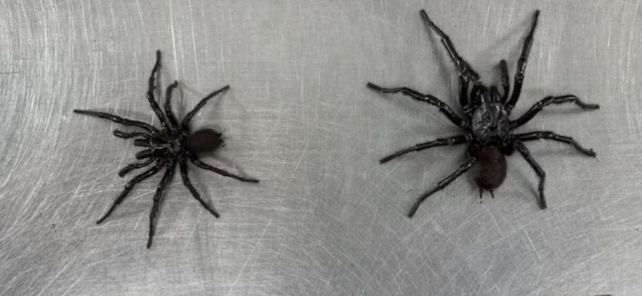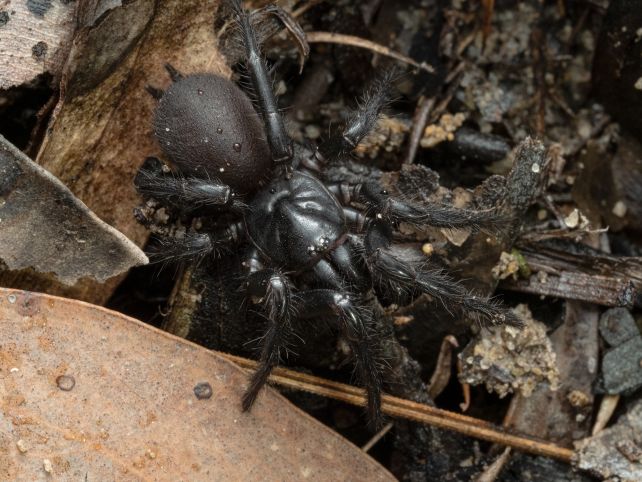Almost every Australian is taught, from a very young age, to be cautious around the funnel-web spider.
These large, black, aggressive arachnids can be found along the eastern coast of the continent, making their homes in web-lined burrows, to pounce on the small critters on which they feast. They also, through some quirk of evolution, secrete a venom more deadly to humans than any other spider.
There are dozens of funnel-web species in Australia, but the most venomous of the bunch is the Sydney funnel-web (Atrax robustus), an arachnid that lives along the coastline of New South Wales. Well, except maybe that’s not quite true. A new, in-depth study of the spider has discovered that what we thought was one species is actually three.
That means there are two new species of the world’s most venomous spider, but the discovery is actually good news: it will allow scientists to better characterize and understand the venom each species produces.

The group of spiders formerly known as A. robustus had posed something of a puzzle to scientists for some time. Although they were all lumped together, there seemed to be some regional variation in what they looked like, with particularly large specimens found to the north of Sydney in the Newcastle region, including the largest male attributed to the species ever seen, an absolute unit nicknamed Big Boy.
Led by arachnologist Stephanie Loria of the Leibniz Institute for the Analysis of Biodiversity Change in Germany, a team of researchers decided to get to the bottom of this diversity. Was it simply adaptations to different habitats, or indicative of deeper diversity within the species?
Performing genetic analysis of the spiders, they found that what we had previously called A. robustus included two other species – and, in turn, they were able to characterize the habitat range of each.

The habitat of A. robustus itself is focused around the Sydney area, as far north as the Central Coast, south to the Georges River, and west to the Baulkam Hills area, with scattered, isolated sightings only slightly further to the west and south.
Further to the south and west dwells the Southern Sydney funnel-web (Atrax montanus), a species originally described in 1914 and later folded into A. robustus. Turns out it was indeed a different spider all along.
Finally, to the north dwells an entirely newly discovered species, the Newcastle funnel-web (Atrax christenseni). And these are the chonkers: Big Boy, it transpires, was a Newcastle funnel-web, and some of the other large funnel-web spiders from the region, such as the recently recovered spider named Hemsworth, were misattributed too.
Being able to sort these spiders into their appropriate species will make a huge difference to understanding their deadly venom – which, for some reason, is only dangerous to the small creatures upon which it preys, and primates, including humans.

Although its venom is the deadliest in the world, no one in Australia has died of a funnel-web bite since the introduction of an antivenom in 1981, despite the 30 to 40 recorded funnel-web bites every year. This is because the antivenom is an excellently effective treatment – but the new discovery could help tweak it.
This is because funnel-web spiders’ venoms are complex peptide mixtures that can vary from species to species, or even from occasion to occasion. And it’s not just the antivenom that interests scientists. Funnel-web venom has a range of potential applications, from natural pesticides to pharmaceuticals. Understanding why funnel-webs produce these mixtures could aid in more efficient venom milking and use and help us figure out the function of the venom.
And there’s something a bit sadder to think about. Funnel-web numbers appear to be on the decline. Although they might be scary to humans, these spiders play an important role in the environments they inhabit. A better understanding of the differences between them will help scientists trying to protect them from the threats they themselves face in a changing world.
The research has been published in BMC Ecology and Evolution.








Leave a Comment